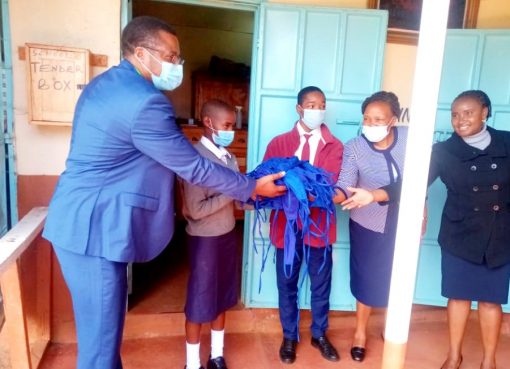Records available at department of Agriculture indicates Mandera County has received two successive locust invasions. The first invasion consisted of 35 swarms of immature adult locust that affected all the sub counties and wards and the recorded destruction affected is estimated to be 37,715 households and 373,271 hectares of land.
According to Diisow Noor Haji, agriculture extension and training and locust lead officer, the first invasion started on December 2019 and lasted for three months. The second invasion started on November 7, 2020 and as at February 14, 2021, we have received 76 desert locust swarms at various developmental stages affecting 61,803 households and 576,800 hectares of land.
In efforts to reduce destruction, the government through Kenya Defense Force ( KDF) did seven sprayings while FAO assisted particularly during the second invasion by training of 12 scouts and 10 staffs on surveillance, 20 staffs on control and one EHS (environmental health and safety, a driver and 2 loaders). FAO also distributed 300 bags of fertilizers (NPK 17:17:17), 400 pieces silage bags and only 20kg of vegetable seeds which have been shared out to the farmers.
In two consecutive years of 2020 and 2021, Mandera County has experienced massive invasion that overwhelmed its capacity and destroyed its breadbasket.
Mr Diisow Noor Haji has requested the government to equip Mandera base since Mandera County is the entry point of swarms from Ethiopia and Somalia and as well as enable it protect it breadbasket.
“The Government has established Mandera County as one of Desert Locust Control Base. Our base is yet to be equipped and staffed like other part of the country such as Wajir, Garissa and Masinga amongst others while we are the entry point of most swarms from Somalia and Ethiopia”, said Noor.
Noor added that they need Sh 43,747,950 as emergency funding to help in efficient and effective surveillance and control of desert locust up to end of June 2021, in the county and another 56,646,900 for some form of livelihood restoration thereafter at the end invasion period.
“We have not experience a third invasion but we are expecting it since its being experienced in norther parts of neighbouring Ethiopia,” said Noor. Countries like Yemen, Saudi Arabia and Ethiopia are experiencing third invasion.
By Charles Matacho





